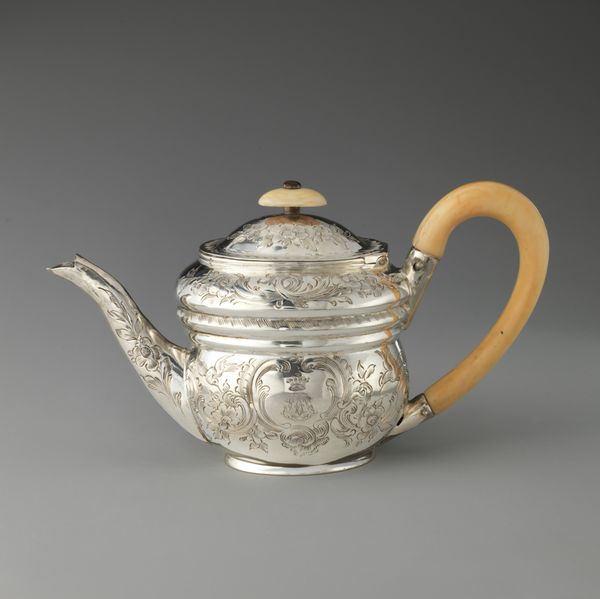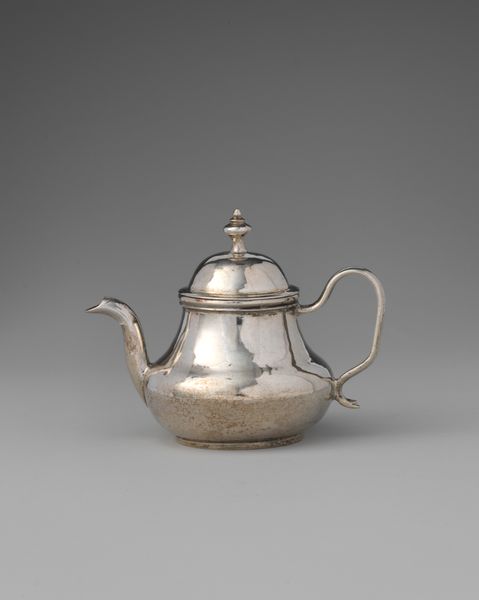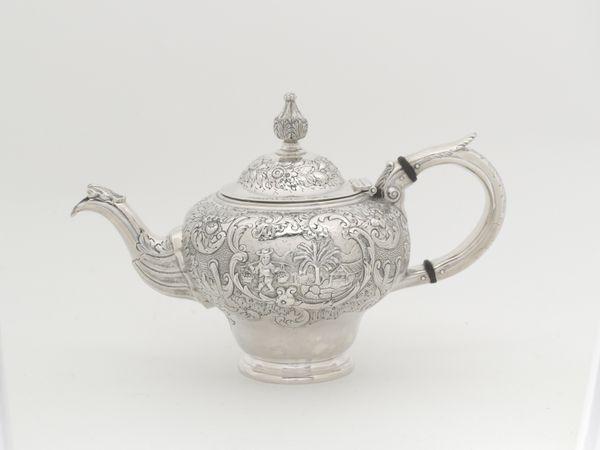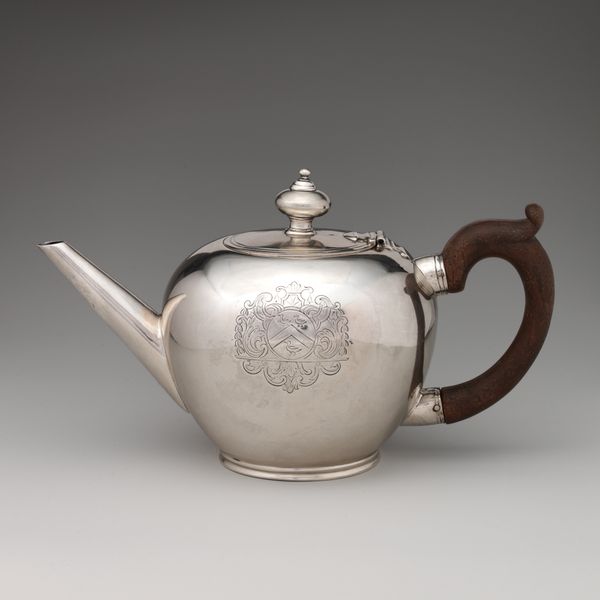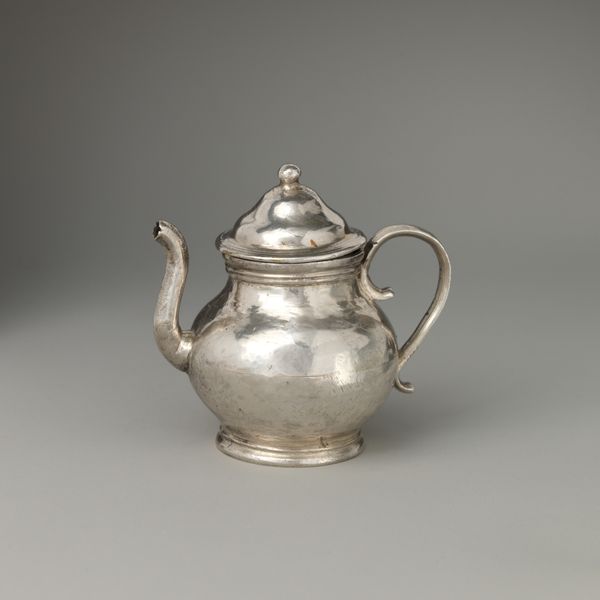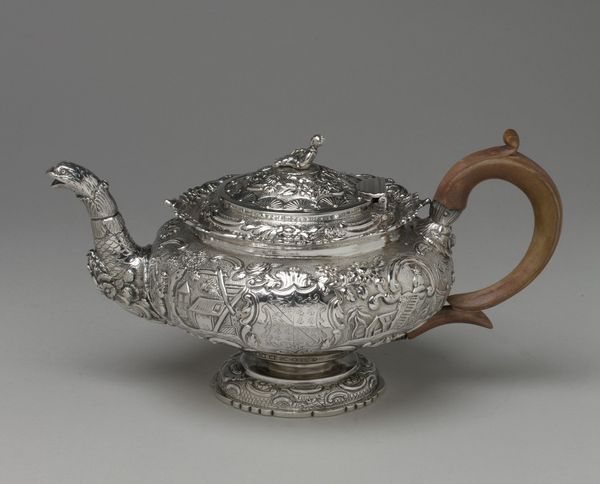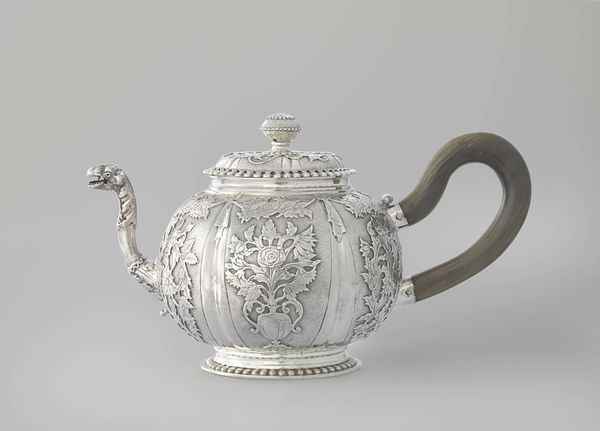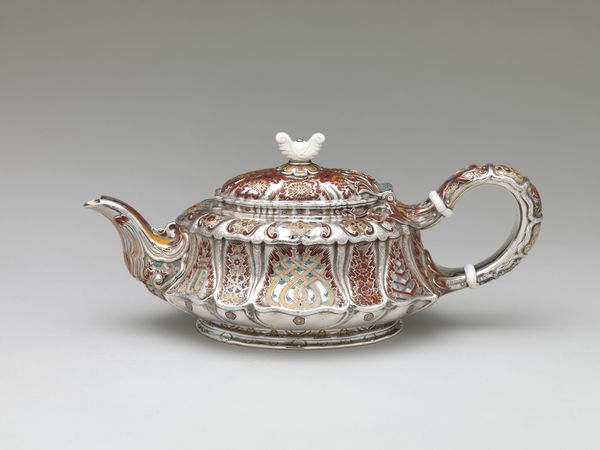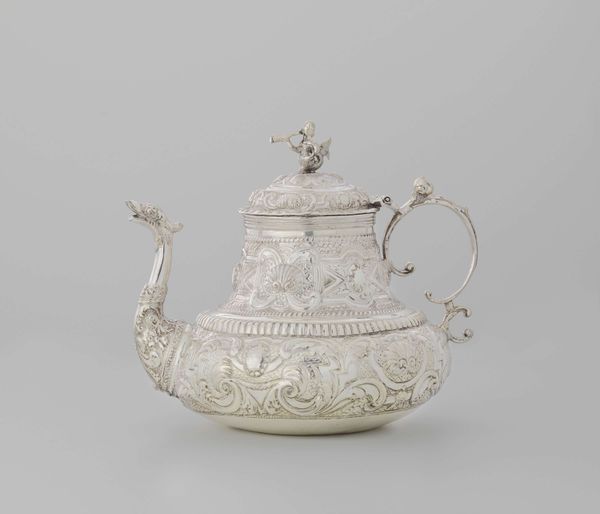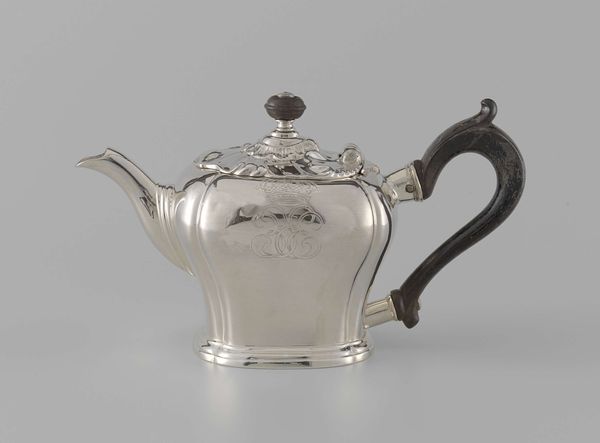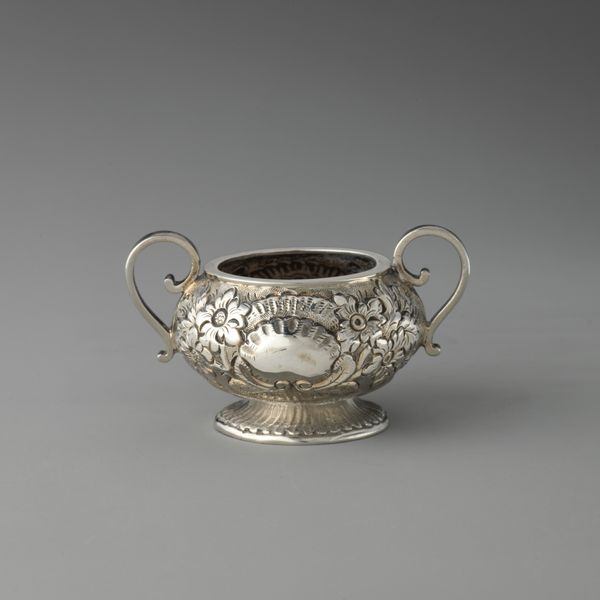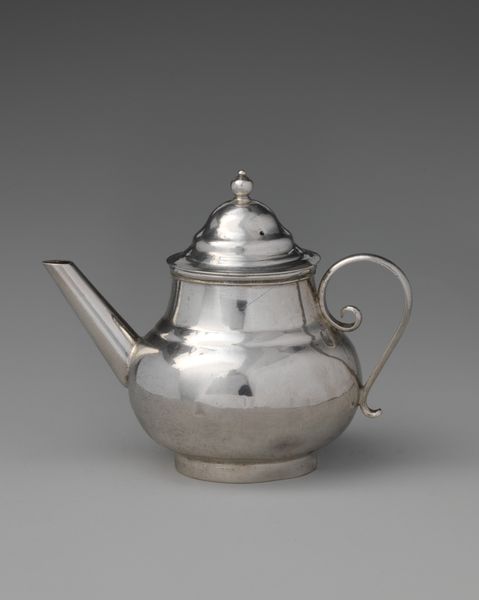
silver, sculpture
#
silver
#
sculpture
Dimensions: 1 1/2 × 2 1/2 in. (3.8 × 6.4 cm)
Copyright: Public Domain
Curator: Looking at this diminutive silver sculpture from the early 19th century, titled "Miniature teapot (part of a set)", dating back to between 1827 and 1829, one can appreciate its craftsmanship. Editor: My first thought is its exuberant texture! It appears almost overloaded with decoration; the profusion of flowers nearly overwhelms the functional form. Curator: Indeed, the overall effect is quite opulent. But observe how the chased floral patterns not only decorate but articulate the surface, creating depth and movement across the diminutive sphere. We can analyze the artist Henry Flavelle's conscious organization of form and detail in silver. Editor: I wonder who this was made for and if miniature tableware suggests social rituals and elite leisure, perhaps children at play in wealthy households or even an adult's novelty collection. These objects reflected status and the family's material values, don’t you think? Curator: Absolutely, but focusing on Flavelle’s workmanship—the meticulously chased floral motifs are uniformly applied, adhering to symmetry and reflecting refined taste while also considering mass production, suggesting a desire for balance and order inherent in classical designs of the time. Editor: Do you suppose then that its creator aimed to create accessible luxury during England's regency period? The miniature form, when paired with this level of detail, signals social aspirations trickling into middling classes, if not directly affordable. This contrasts with the grand designs, often customized, for the aristocratic elite of prior years. Curator: A relevant context indeed. I concede this speaks volumes about social ambition! Although, structurally speaking, each petal, each curve, operates independently yet coalesces into a harmonious, albeit intricate, composition. A self-contained artistic microcosm... Editor: That harmonious intricacy, though, is exactly what makes it so representative of its era – the social complexities of 19th-century England rendered in silver, wouldn't you agree? An attempt to display wealth amid rising economic shifts. Curator: It would appear so. Reflecting, through material refinement and decorative exuberance. I must admit a grudging appreciation for that now! Editor: Precisely, and on view in the Metropolitan Museum of Art, allowing present visitors to glean from its sparkling surface a moment from past times!
Comments
No comments
Be the first to comment and join the conversation on the ultimate creative platform.
